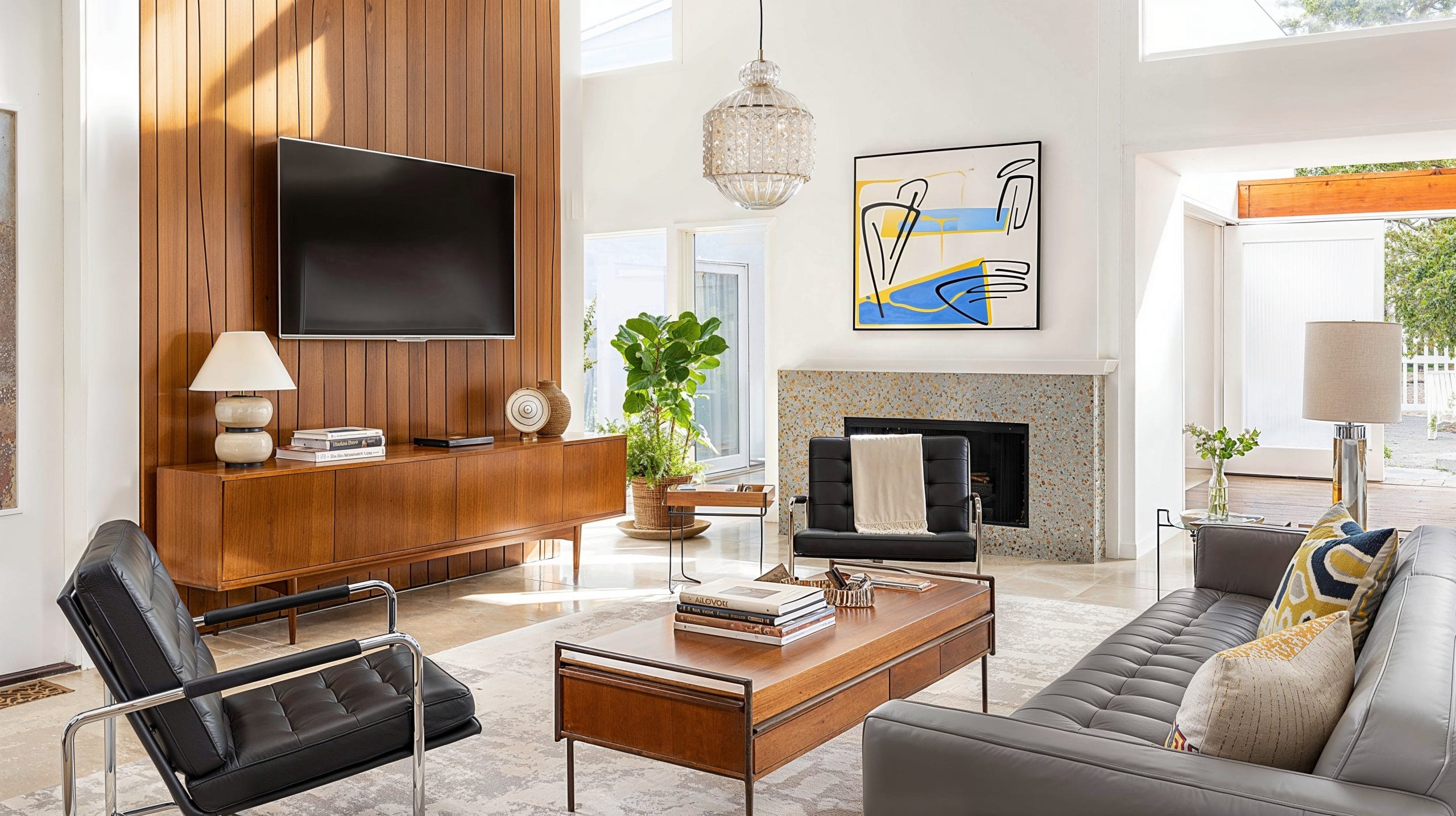Retro style is all about bringing the charm of past decades into modern interiors—but there’s a fine line between creating a nostalgic, stylish space and making your home feel like a time capsule. The key is balance. With the right mix of vintage elements and contemporary touches, you can achieve a retro look that feels fresh, intentional, and totally livable.
In this article, you’ll learn how to recreate retro style in decoration with elegance, subtlety, and plenty of personality.
What Is Retro Style in Decoration?
Retro style refers to interior design inspired by trends from the 1950s through the 1980s. It often includes:
- Bold colors and geometric patterns
- Vintage furniture and accessories
- Funky shapes and textures
- Unique lighting designs
- Pop culture references and nostalgic items
Retro is not the same as antique—it’s more playful and expressive, drawing from recent history rather than centuries-old design.
Understand the Era You Want to Evoke
The word “retro” covers several decades, each with distinct characteristics:
- 1950s: Pastel tones, chrome furniture, checkered floors, and diner-inspired décor
- 1960s: Psychedelic patterns, bold contrasts, rounded furniture, and pop art
- 1970s: Earth tones, rattan, shag rugs, and macramé
- 1980s: Neon colors, lacquered finishes, and eclectic shapes
Before you begin decorating, decide which era resonates most with you. You can blend styles from multiple decades, but it helps to have one as a foundation to maintain cohesion.
Use Retro Colors with Intention
Color is one of the most defining aspects of retro design, but it’s also where many people go overboard. Instead of painting every wall orange or lime green, consider using bold retro colors in moderation.
Color palettes by era:
- 50s: Mint green, baby pink, butter yellow
- 60s: Bright red, orange, purple, and acid green
- 70s: Mustard yellow, avocado green, burnt orange, chocolate brown
- 80s: Hot pink, electric blue, teal, and black-and-white contrasts
Tips:
- Use bold retro tones as accent colors through pillows, art, or a single statement wall.
- Ground your design with neutral backgrounds like white, beige, or soft gray to avoid visual overload.
- Pair vibrant colors with natural textures like wood or leather for balance.
Incorporate Vintage Furniture Sparingly
Retro furniture is often the centerpiece of a vintage-inspired room. Look for pieces with iconic silhouettes, such as:
- Low-profile sofas with wooden legs
- Egg chairs or tulip chairs
- Mid-century sideboards and credenzas
- Funky coffee tables with unusual shapes
Don’t feel the need to furnish your entire space with vintage pieces. One or two standout items are often enough to set the tone. Combine them with modern furniture to create contrast and prevent the space from feeling outdated.
Play with Retro Patterns and Textures
Geometric prints, bold stripes, and floral patterns are common in retro décor. Use them thoughtfully to add character:
- Add patterned wallpaper to one accent wall
- Use vintage-style upholstery or throw pillows
- Incorporate rugs with iconic shapes or prints
Textures like velvet, corduroy, plastic, and vinyl also define retro interiors. Mix these textures with contemporary finishes like glass or metal to keep the space balanced.
Add Retro-Inspired Lighting
Lighting is a subtle but powerful way to introduce retro style. Consider these options:
- Pendant lights with round or starburst designs
- Arc floor lamps with metallic finishes
- Sconce lights with cone or globe shapes
- Table lamps in ceramic or glass bases with bold colors
Choose one or two statement fixtures that reflect retro charm, but keep the rest of the lighting clean and simple.
Accessorize with Personality
The right accessories can transform a plain room into a nostalgic haven. Ideas include:
- Vinyl record players or wall-mounted records
- Rotary phones or retro-style electronics
- Framed vintage posters or pop art
- Patterned curtains or funky vases
- Retro clocks and ceramic figurines
Avoid clutter. A few well-placed items can make a stronger impact than shelves filled with old collectibles.
Combine Retro with Modern for Balance
To avoid exaggeration, blend your retro touches with modern elements:
- Pair a retro sofa with a sleek, contemporary coffee table
- Use vintage wallpaper in a room with minimalistic furniture
- Combine retro patterns with solid, modern colors
This mix creates a curated, intentional design that respects the past while embracing the present. The contrast enhances both styles and prevents the space from feeling like a themed set.
Keep Functionality in Mind
Retro style should never sacrifice comfort or practicality. Many original vintage pieces were designed with different needs in mind and may not suit your modern lifestyle.
Solutions:
- Look for modern replicas with updated materials and ergonomics
- Retrofit vintage furniture for contemporary use (e.g., add charging ports or new cushions)
- Choose decor that’s both stylish and usable (like a retro-looking speaker with Bluetooth)
Start Small, Then Expand
If you’re new to retro decorating, start with small changes:
- Swap out a modern lamp for a retro-inspired one
- Add a vintage armchair in a corner
- Display nostalgic artwork or decorative items
As you grow more confident, you can layer in more retro elements, always keeping harmony and comfort in mind.
Final Thoughts: Stylish Nostalgia Without Going Overboard
Retro style is a joyful, expressive way to decorate, but it requires careful curation to avoid becoming overwhelming. By choosing key elements from your favorite decades, using bold colors and patterns sparingly, and blending vintage with modern, you can create a home that feels stylish, cozy, and delightfully nostalgic—without looking like a museum.
Retro is all about personality. Let your home tell a story—just make sure it’s one you love living in.
